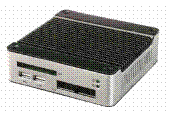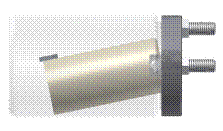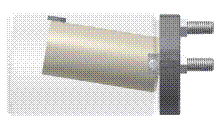Project Development:
An extract from one of our reports
Note: When consulting, our time is purchased, and our view is that the client owns the work. In this case, the client gave us permission to share the report.
The text below is from a report (“Portable Substrate Test Unit”) commissioned by a client who was interested in scoping out possibilities for biogas production in various places around the Pacific. As part of their strategy to engage in identification, initial evaluation, then more intensive investigation, we were hired to research and design a substrate testing system that had to be
- portable (indeed, able to be carried as luggage on a commercial flight)
- low-cost, and
- usable by someone without special training.
Obviously, this unit would be used to undertake the first draft evaluation of available bio-resources.
If anyone wishes to see the whole report, please and request it.
The extracted section below regards the measurement of gas production, in the specific and limited context or a portable substrate test unit, and what is found below follows a discussion of gas collection in marked containers. (Please note that the footnotes, which work fine in a page-oriented medium, do not work as well on the web.)
Gas collection containers: disadvantages and alternate suggestions
While the use of gas collection containers is the best inexpensive method of measuring output, it has several significant drawbacks.
The most prominent is listed in the first paragraph of this section, which is that if the containers overfill and some biogas leaks out, an accurate reading cannot be obtained. Consider what may happen if the substrate being evaluated has a good culture established, if mesophilic or thermophilic temperatures are being used, and if that substrate supports vigorous generation of biogas. In such a circumstance the amount of biogas generated could easily be some strong multiple of the volume of the slurry [at up to 10 liters], and therefore potentially rather more than the volume of the gas collection unit [of the same size]. The only way to insure that biogas is not lost to measurement during any given day is to check the level of gas every few hours, which of course is functionally impossible across a 30-day generation cycle. When would one sleep?
Having a meter or other device that measures gas volume in the correct range and which therefore insures that data will not be lost— even if it does not allow digital recording of that measurement— would resolve the problem of checking the gas collection units several times a day, and would allow the test unit to be a bit simpler and more compact. (These meters are not free, however, so it would also increase the expense.)
There is of course a second significant disadvantage to using gas collection containers, which is that the requirement to be compulsive about regularly checking the test unit is bound to have a negative impact on accuracy. To the degree that data collection can be automated, or partially automated, accuracy will almost certainly increase, and the amount of attention that must be paid to the test unit can be significantly reduced. (Complete liberation from dealing with the test unit more or less daily would require further changes, however. One must still check the level of water and test the gas composition, unless these functions are automated as well, as indeed they could be.)
To move toward automating the measure of production, a volumetric gas meter must be used. The problem is that the vast majority of these meters use a technology and/or a design which is not suited to low volumes, as contrasted to the tens or hundreds of liters per day which most meters are intended to ascertain. For the purpose of the test unit, we need a meter that can scale in the range of, say, a few ml per hour[43] to a few ml per minute.
A gas meter which can, at minimum, measure a daily output of a quarter of the total volume of the test digester being monitored, and which at maximum should be able to measure 4 to 8 times that volume, will have the approximate proper range. In the case of the test unit, we would sometimes want to have test digesters as small as 4 liters, and at other times we may wish to have a single or several ganged digesters with a volume of ~12 liters. Thus, if one expects to measure the gas output from a test digester that is 4 liters, the meter should at minimum be able to measure 1 l/day. Where a test digester is 12 liters, the meter should at maximum[44] be able to measure (say) 50 liters per day. For example:
| Digester liters |
ml/min | ml/hr | l/day | |
|---|---|---|---|---|
| Min vol measure (¼ x digester) |
4 | ~0.7 | 40 | 1 |
| Max vol measure (4 x digester) |
12 | 33.0 | 2,000 | 50 |
One final criteria is important, and that is whether the meter will offer not only a visual read-out, but will in addition generate an output that can be recorded (generally digitally). In addition, some meters which offer a visual read out are actually reporting the instantaneous rate of production, not the total volume of production over some period of time. More on those notions below.
Suggestions for meters
We have some alternative meters to suggest:
| Company | Model | Source | Cost[45] | min ml/min |
max ml/min |
Record? | Single output? |
Comment |
|---|---|---|---|---|---|---|---|---|
| Omega | FL-100 | Order/data | $320 | 0.002 | 1,900 | no | y | Rate only |
| Wet Tip Gas | Order/data | $460 | 1.0? | >5,000? | pulse? | y | ||
| Cole Parmer | KH32908-09 | (discontinued) | $940 | 1.0 | 100 | RS-232 | y | Footnote [46] |
| Micro-Trak | 101 | Order/data | $1,700 | 0.2 | 4 | RS-232 | y | Footnote [46] |
| Micro-Trak | 100 | Order/data | $1,700 | 5.0 | 35 | RS-232 | y | Footnote [46] |
| Omega | FMA-1601A | Order/data | $1,830 | 0.5 | >5,000 | RS-232 | y | Footnote [46] |
| Ritter | TG 05 | Order/data | $5,875 | 1.7 | >5,000 | pulse | y | |
| Ritter | TG 1 | Order/data | $6,150 | 1.7 | >5,000 | pulse | y |
footnote 46: These units are “thermal mass flow” meters, meaning measure the heat conductance of the gas, not its volume directly, and therefore must assume a percentage CH4. (Heat conductance values will change depending on the composition of the gas.) Where the percentage varies from the calibration assumption, the read-out must be interpolated. As such, these units require testing the %CO2 before the true output can be known, and they require the gas to be dry. (Biogas generated at temperature will be saturated with water.) At minimum, then, one has to dry the gas and measure the %CO2. Alternatively, one can remove both water and CO2 before measurement.
One thing that should be evident— as previously mentioned— is that these meters are expensive, and more so if one wishes to have several smaller test digesters running, and to measure output from each simultaneously. Two approaches may help.
- First, consider using a combination of a single meter and the gas collection containers, where the low-cost but higher maintenance containers are used with several test digesters to gain an idea of which substrate or conditions of digestion produce the most gas. Then the single more expensive meter can be used with a single large or several ganged test digesters to get a more accurate idea of the potential of that substrate or those conditions of digestion.
- Second, one can set up some gas collection bags rather than the calibrated containers, and periodically empty these bags one at a time through the meter.
 There is a third approach as well. A company run by a friend of ours (contact information on request) has constructed an electronic totalizer which can accept pulses from up to 16 devices, count them, and store data about the counts on a USB thumb drive.[48] Pulses might, for example, be produced by the MilliGascounter (Ritter MGC mentioned above), or they can be provided by fairly low-cost “tipping bucket” type gas collection devices, such as the Wet Tip Gas meter. (See patent here.) There should be one “tipping bucket” device for each potential digester.
There is a third approach as well. A company run by a friend of ours (contact information on request) has constructed an electronic totalizer which can accept pulses from up to 16 devices, count them, and store data about the counts on a USB thumb drive.[48] Pulses might, for example, be produced by the MilliGascounter (Ritter MGC mentioned above), or they can be provided by fairly low-cost “tipping bucket” type gas collection devices, such as the Wet Tip Gas meter. (See patent here.) There should be one “tipping bucket” device for each potential digester.
As the pictures below show, each of these “tipping bucket” units might be constructed of two small containers, one inside the other. The larger outside container is filled with water, and the smaller inside container is gradually filled with gas from the test digester. At first, the weight of the container keeps it tilted down, but at some point enough gas is bubbled into it that buoyancy overcomes its weight. Then it tips up and empties. When it does, a magnet on its top interacts with a reed switch, generating a pulse, which is sent to the totalizer (picture above).
 |
 |
|
| The smaller container (i.e. inside the larger gray container) fills with gas… | …then tips up, producing a pulse, empties and falls to the down position. |